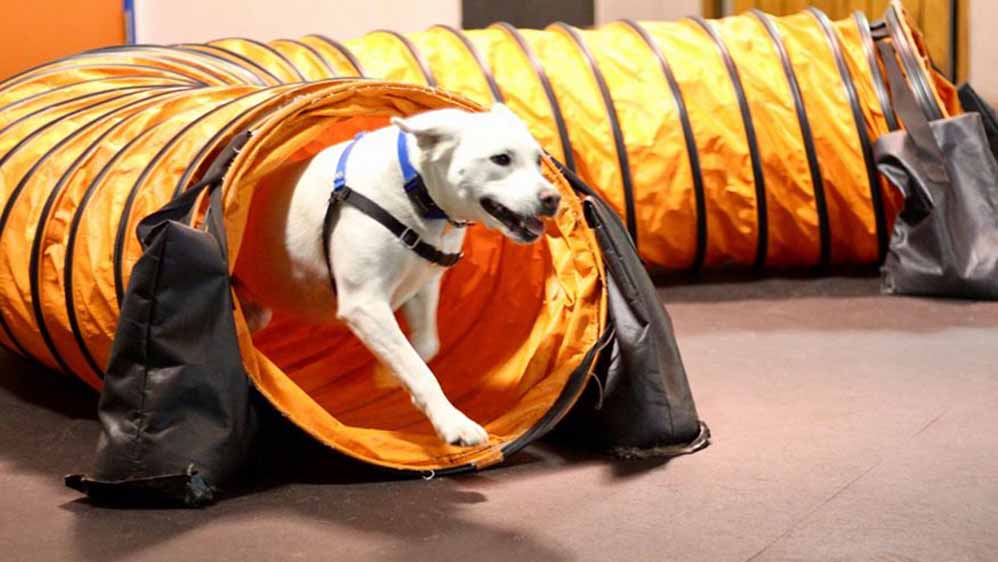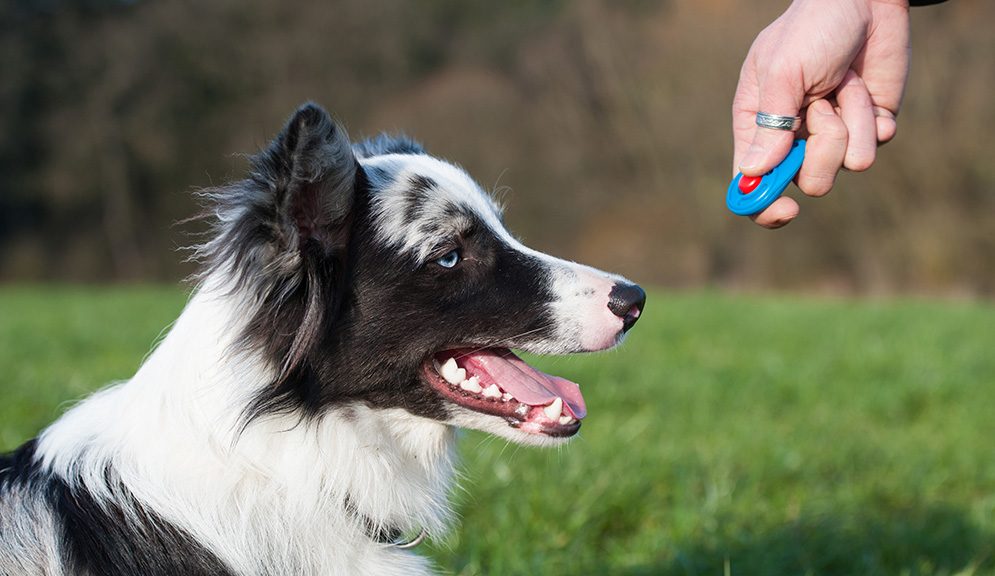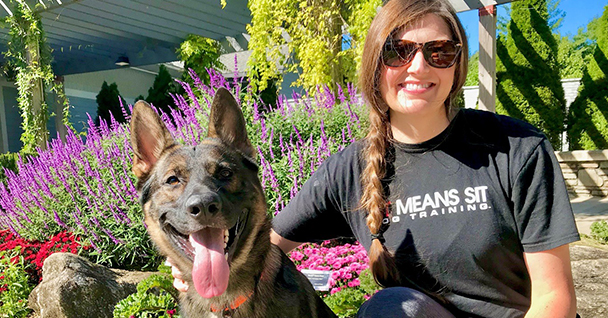The Benefits of Early Dog Training for a Well-Behaved Family pet
The Benefits of Early Dog Training for a Well-Behaved Family pet
Blog Article
Necessary Tips for Effective Dog Training: A Guide for Pet Owners
Effective pet training is a diverse process that calls for a critical strategy customized to both the pet's temperament and the owner's objectives. Comprehending just how to browse these challenges can substantially enhance the training experience, eventually changing the relationship between owner and canine.
Recognizing Dog Actions
Comprehending pet behavior is vital for reliable training and fostering a harmonious partnership between dogs and their proprietors. dog training. Dogs interact primarily with body language, articulations, and actions, making it important for owners to analyze these signals accurately.

Socializing plays a considerable function in dog behavior; direct exposure to numerous atmospheres, people, and other pets can substantially affect a pet's personality. Moreover, aspects such as breed characteristics and specific personality must direct training methods, as some types might have particular behavioral attributes that demand tailored methods. By recognizing these aspects, proprietors can produce a supportive setting that encourages favorable behavior, leading to effective training results and a deeper bond with their pet dogs.
Developing Constant Commands
Effective interaction with your canine begins with developing regular commands. This fundamental aspect of training is essential for fostering understanding in between you and your family pet. Uniformity in the commands you utilize guarantees that your dog can dependably link certain words or expressions with the wanted habits.
When choosing commands, pick clear, unique words that are very easy to say and separate from one an additional. Stay clear of using similar-sounding commands that may puzzle your pet. For instance, utilizing "rest" and "remain" is suitable, however "rest" and "struck" can result in misunderstandings.
Additionally, preserve the very same tone and volume for every command. Pet dogs are sensitive to vocal signs, so varying your tone can develop complication.
It is similarly crucial to make certain that all member of the family get on the very same web page regarding the commands made use of. A united front in command usage will prevent combined signals and enhance the learning procedure.
Favorable Support Methods
The power of positive support in pet training lies in its ability to urge preferred behaviors via incentives and praise. This method is grounded in the concept that habits followed by favorable end results are a lot more likely to be duplicated. By integrating positive reinforcement into your training routine, you can properly shape your pet's actions in a constructive manner.
To carry out positive support, it's important to recognize what motivates your pet, whether it be treats, playthings, or spoken praise. When your pet dog performs a preferred activity, such as remaining on command, quickly reward them with a reward or love. This association between the command and the favorable outcome reinforces their understanding.
It's essential to timing the benefits appropriately; delivering the support within secs of the desired behavior assists your dog make the connection (dog training). Furthermore, uniformity is key-- make sure that all family members utilize the very same commands and reward systems to prevent complication

Gradually, you can decrease the regularity of treats as your pet learns the behavior, transitioning to commend or intermittent benefits. This approach not just fosters a strong bond in between you and your pet but additionally promotes a positive understanding environment, making training an enjoyable experience for both.
Socialization and Interaction
Consistently subjecting your dog to a range of environments, individuals, and various other pets is essential for their social advancement. Socializing must begin early, ideally during the essential window of 3 to 14 weeks, when pups are most receptive to brand-new experiences. However, older pet dogs can likewise take advantage of continuous socialization initiatives.
Present your pet dog to different settings, such as parks, pet-friendly shops, and city locations. This exposure helps them adjust to numerous stimuli, decreasing anxiety and anxiety reactions. Encourage favorable communications with other dogs and individuals, making certain that these experiences are regulated and risk-free to foster self-confidence.
Utilize organized playdates with courteous pets, as this can boost your canine's social abilities and educate them proper behavior. Obedience courses and training sessions YOURURL.com likewise supply outstanding possibilities for socializing, allowing your pet to engage with others in a supervised setting.
Screen your pet dog's body language throughout communications, as this will aid you evaluate their convenience level. Slowly raise exposure to even more tough situations while making certain that each experience declares. A well-socialized pet dog is most likely to display well balanced actions, making them a happiness to have in any kind of setup.
Attending To Usual Training Challenges
Every pet dog proprietor will certainly experience training obstacles eventually, despite their canine's age or socialization degree. Identifying usual concerns such as stubbornness, distractions, and fearfulness can assist in creating reliable strategies for improvement.

Diversions throughout training sessions can hinder emphasis. To fight this, start training in a peaceful atmosphere with marginal stimulations. Progressively present diversions as the pet dog ends up being a lot more efficient in commands. Short, regular training sessions are likewise efficient in maintaining attention.
Terror can prevent a pet dog's discovering process. Steady desensitization to the resource of concern, coupled with positive support, can aid relieve anxiousness. Persistence is important; never force address a pet into a situation that causes distress, as this may exacerbate the issue.
Ultimately, understanding and dealing with these typical difficulties with a structured technique will certainly promote a much more productive training experience, strengthening the bond between pet and proprietor while promoting effective learning.
Final Thought
In recap, effective dog training relies upon a detailed understanding of canine behavior, the facility of regular commands, and the application of positive support techniques. Socializing plays an important role in establishing well-adjusted pets, while attending to usual training difficulties calls for patience and versatility. By implementing these necessary techniques, pet dog owners can promote a solid bond with their canines and advertise desirable actions, inevitably resulting in an unified partnership between people and their canine friends.
Understanding canine actions is important for efficient training click now and cultivating a harmonious connection in between pooches and their owners.Socialization plays a substantial role in canine habits; direct exposure to numerous environments, people, and other pets can significantly impact a pet dog's personality.The power of favorable reinforcement in canine training lies in its capability to urge wanted actions via incentives and appreciation. By incorporating positive reinforcement into your training regimen, you can successfully form your pet's actions in a constructive manner.
In summary, successful canine training depends on a thorough understanding of canine actions, the facility of consistent commands, and the application of positive reinforcement methods.
Report this page